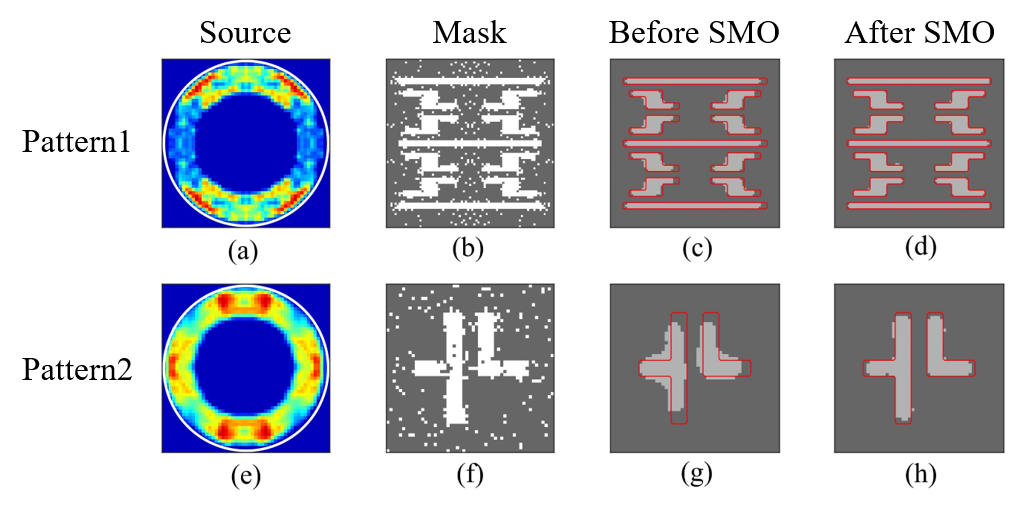Recently, Shanghai Institute of Optics and Fine Mechanics (SIOM), Chinese Academy of Sciences (CAS), has proposed a source mask optimization (SMO) technique for extreme-ultraviolet lithography (EUVL) based on thick mask model and social learning particle swarm optimization (SL-PSO) algorithm. Simulation results implicate that the proposed technique is prior to similar SMO techniques based on heuristic algorithms in optimization efficiency. The research article has been published on Optics Express on Feb. 15, 2021.
Lithography is one of the key technologies in the fabrication of very-large-scale integrated circuits (VLSI). With the continuous shrinking of critical dimension (CD) of the integrated circuits, the optical proximity effects degrade the lithographic imaging quality significantly. Computational lithography refers to the techniques that effectively improve the resolution and process window by optimizing the illumination source and mask pattern with mathematical models and optimization algorithms, without changing the hardware and software configurations of the lithography systems. Computational lithography is regarded as the new enabler of Moore’s Law.
EUVL is the most advanced lithography technology, which has been applied to the high-volume manufacturing (HVM) of 5nm process node. Due to the characteristics of EUVL, such as the thickness of mask is much larger than the wavelength of light source, and the optical system is reflective, the corresponding computational lithography technique is quite different from the traditional technique, and has been widely studied in the world.
SMO is one of the critical computational lithography techniques. It optimizes the illumination source and mask pattern simultaneously to improve imaging quality. The research group from SIOM proposed an SMO method for EUVL based on the thick mask model and SL-PSO algorithm. They found that the fast thick mask model based on structure decomposition method (SDM) is applied to the imaging simulations of the pixelated mask, and the simulation accuracy is improved compared with thin mask model. Rigorous electromagnetic simulation is then carried out to validate the optimization results. The source and mask pattern are optimized by SL-PSO algorithm, which improves the optimization efficiency via the social learning strategy. Besides, an initialization parameter is tuned to control the initial swarm in SL-PSO algorithm, and the optimization efficiency and the optimized mask’s manufacturability are both improved. Optimization is carried out with various target patterns. The simulation results verify the superiority of the proposed technique in optimization efficiency than other SMO techniques based on heuristic algorithms.
The research is supported by the National Major Science and Technology Projects of China and Natural Science Foundation of Shanghai.

Fig.1. SMO results of different algorithms. (Image by SIOM)

Fig.2. Optimization results of various patterns. (Image by SIOM)
Article website:
https://doi.org/10.1364/OE.418242
Contact:
WU Xiufeng
General Administrative Office
Shanghai Institute of Optics and Fine Mechanics, CAS
Email: xfwu@siom.ac.cn
Web: http://english.siom.cas.cn/